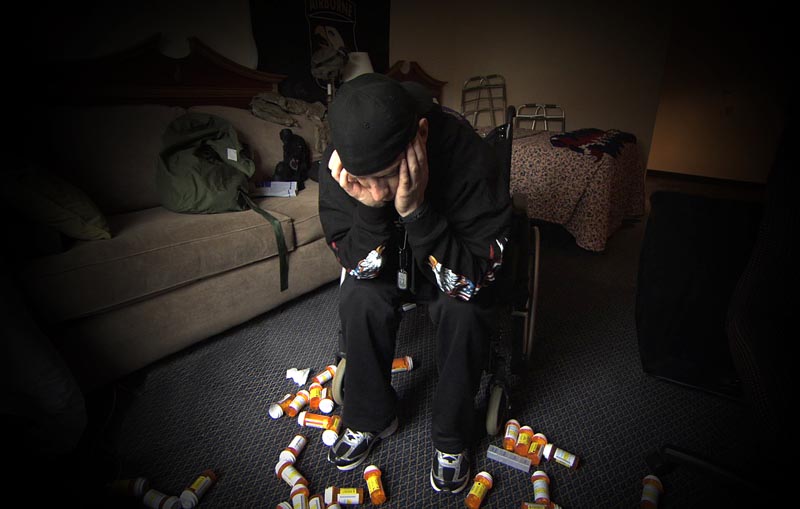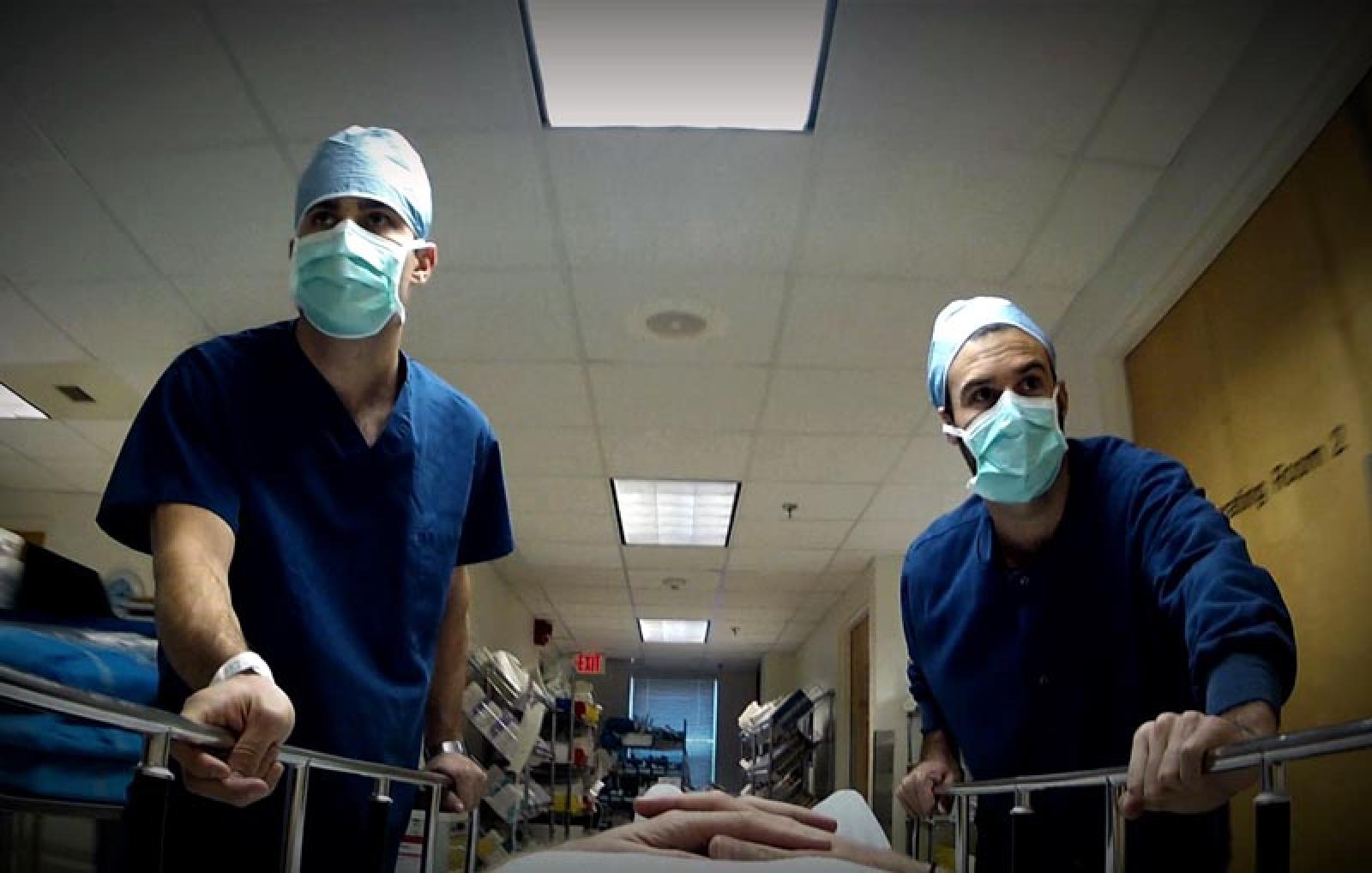Director Matthew Heineman and co-director and producer Susan Froemke spent eight months researching the topic of health care before turning on the camera. As filmmakers, their major obstacle was clear — how to distill such a complex topic into something relatable.
“Health care is an incredibly complicated, polarizing, hyperbolic topic that was just gaining traction in the national spotlight,” said Mr. Heineman, the director of the documentary Escape Fire: The Fight to Rescue American Healthcare, in an interview this week. The film will be shown next week as part of the Martha’s Vineyard Film Festival. “How can you distill this complicated mess into a film... and how can you make the film entertaining, moving and emotional?”

One of the answers was through personal stories like that of Sgt. Robert Yates and Dr. Erin Martin, two characters Mr. Heineman considers the heart and soul of the film.
“We wanted to make a film that forced audiences to be invested in the characters,” he said. “Dr. Martin’s story is that of a young idealistic doctor fighting with handcuffs from practicing the kind of medicine she wants to practice... in many ways she is a case study of how we’re not allowing our doctors to help us. We’ve set up a system that’s perverse and rewards quantity over quality, that rewards acute care over preventive care, that rewards high tech over high touch.”
Sgt. Yates’s story began in Afghanistan. His platoon went up a mountain with 23 infantry members and returned with only eight survivors. Sgt. Yates was cared for at a base in Germany, and later transported back to Walter Reed Hospital in Maryland.
“You’ve seen a lot,” a nurse tells him as he begins to cry, the tears running down his cheeks which are excessively smooth, a result of overmedication. “We’re glad to have you back.”
Mr. Heineman said that as a filmmaker and journalist he has to remain objective, but as a human being, he cares about his subjects.
“I believe in them,” he said reflecting on the moment with Sgt. Yates. “It’s a hard thing to hear and to film, but part of documentary film-making is capturing the moments and developing a trust with the characters that allows them to feel as though you’re not there.”
It took the film crew nearly a year of negotiations with all three branches of the military to receive permission to accompany Sgt. Yates back home on a med-flight.
“It was a long, long process, but at the end of the day, they allowed us to tell the good and the bad, and to show the problem of overmedication,” he said. “There’s redemption, [the military] is trying address this problem that’s hurting and killing so many of our veterans. I really commend the military for allowing us to tell the full story. If they hadn’t, I don’t know if we would have pursued it. To us, we needed to tell that full story.”
Through military programs Sgt. Yates has begun to use acupuncture and meditation to overcome his addiction and is doing much better, Mr. Heineman said.
Casting for documentaries is the most important part of the process, Mr. Heineman said. Finding the characters was an organic process. The first shoot was done with Dr. Andrew Weill, director of the Center for Integrative Medicine at the University of Arizona, where he runs a fellowship program for doctors frustrated with and disenfranchised from the medical system, or those who feel they didn’t receive a well-rounded education in medical school.
It was at Dr. Weill’s fellowship that the crew met Dr. Erin Martin.
“Often one story would lead into another one, one expert would lead to a human subject we would follow,” he said. “We wanted to make sure each story line added a difference piece of the puzzle. “
The health care system can seem to be “all doom and gloom”, Mr. Heineman said, but through the film he learned there are solutions.
“Our system is burning but there are solutions right in front of us,” he said. “I’m inspired by the individuals we filmed and the institutions we filmed that are really fighting the status quo and fighting to put health care on a sustainable path for the 21st century.”
According to Mr. Heineman, the solutions will evolve from within the existing health care system. For example, for over a year his movie was called A Tale of Two Systems, “the most boring title for a documentary,” Mr. Heineman admitted. But then he was sent a lecture from former head of Medicare and former CEO of the Institute for Healthcare Improvement, Dr. Donald Berwick, titled Escape Fire: Lessons Through a Health Care System.
The title of the lecture was inspired by an incident that had nothing to do with the health care system; the 1949 Mann Gulch fire in Montana, where all 13 smoke jumpers and firefighters died except for foreman Wag Dodge. As the fire spread up the mountain and Mr. Dodge realized he wouldn’t make the ridge line in time to reach safety, he created an escape fire by burning an area of grass around himself so the fire would not have any fuel upon reaching him. The fire eventually leaped over Mr. Dodge as it sought more dry grass, and he survived. Mr. Dodge had found a solution within the fire, something Dr. Berwick also felt was not only essential but possible.
“To me the major notions here are to redesign care so it is coordinated, safe and patient-centered instead of fragmented . . . and the great design emerging around the world of a system that is highly... focused on health and wellness,” said Dr. Berwick, who became a featured expert in Mr. Heineman’s film. “Clinicians are in the right place at the right time... the solutions to affordable and superb health care are in the hands of the people who give care and no one else,” he said. “I say to young people, this is your time, take the ball and make health care what it could be – a team of clinicians respecting each other, putting the patient at center and giving patients the power and honoring their lives.”
Escape Fire will be shown twice next week, on Wednesday at the Chilmark Community Center and on Thursday at the Harbor View hotel in Edgartown. Mr. Heinemen and Dr. Berwick will accompany both screenings, but it is in Chilmark that Mr. Heineman’s roots are deepest. In fact, it wasn’t too long ago that as a summer kid he was helping film festival director Thomas Bena by volunteering at festival events and setting up chairs.
“I’m honored to be showing the film in the community center,” Mr. Heineman said. “It’s pretty awesome to be back there.”
Mr. Bena agreed. “This film for me is exactly what I’m trying to do with the film festival – we need to work hard together to change the world for the better,” he said. “The festival’s role in the community is bringing these subjects into the discussion area.”
Escape Fire screens at the Chilmark Community Center on August 15 and at the Harbor View in Edgartown on August 16, both nights at 8 p.m. Tickets are $15 or $7 for members and are available at tmvff.org. For more information on the film visit escapefiremovie.com





Comments
Comment policy »